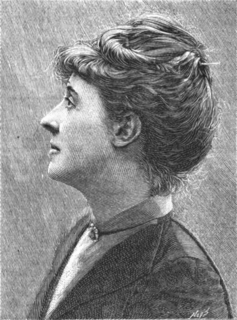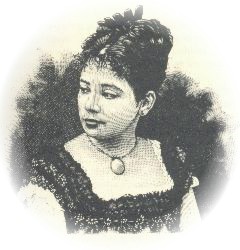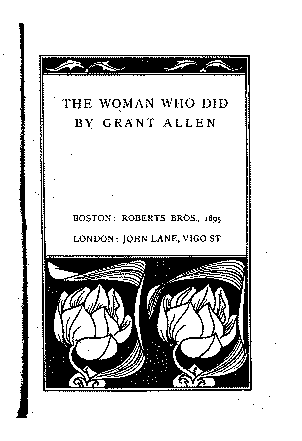Feminist science fiction is a subgenre of science fiction focused on theories that include feminist themes including but not limited to gender inequality, sexuality, race, economics, and reproduction. Feminist SF is political because of its tendency to critique the dominant culture. Some of the most notable feminist science fiction works have illustrated these themes using utopias to explore a society in which gender differences or gender power imbalances do not exist, or dystopias to explore worlds in which gender inequalities are intensified, thus asserting a need for feminist work to continue.
Science fiction and fantasy serve as important vehicles for feminist thought, particularly as bridges between theory and practice. No other genres so actively invite representations of the ultimate goals of feminism: worlds free of sexism, worlds in which women's contributions are recognized and valued, worlds that explore the diversity of women's desire and sexuality, and worlds that move beyond gender.

Charlotte Perkins Gilman, also known as Charlotte Perkins Stetson, her first married name, was an American humanist, novelist, writer of short stories, poetry and nonfiction, and a lecturer for social reform. She was a utopian feminist and served as a role model for future generations of feminists because of her unorthodox concepts and lifestyle. She has been inducted into the National Women's Hall of Fame. Her best remembered work today is her semi-autobiographical short story "The Yellow Wallpaper", which she wrote after a severe bout of postpartum psychosis.
Chick lit or chick literature is genre fiction, which "consists of heroine-centered narratives that focus on the trials and tribulations of their individual protagonists". The genre often addresses issues of modern womanhood—from romantic relationships to female friendships to matters in the workplace—in humorous and lighthearted ways. At its onset, chick lit's protagonists tended to be "single, white, heterosexual, British and American women in their late twenties and early thirties, living in metropolitan areas". The genre became popular in the late 1990s, with chick lit titles topping bestseller lists and the creation of imprints devoted entirely to chick lit. Chick lit critics generally agreed that British author Catherine Alliott's The Old Girl Network (1994) was the start of the chick lit genre and the inspiration for Helen Fielding's Bridget Jones's Diary (1996) which was wildly popular and is the "ur-text" of chick lit.

Lily Braun, born Amalie von Kretschmann, was a German feminist writer and politician of the Social Democratic Party (SPD).

So Long a Letter is a semi-autobiographical epistolary novel originally written in French by the Senegalese writer Mariama Bâ. Its theme is the condition of women in Western African society.

Edith Clara Summerskill, Baroness Summerskill, was a British physician, feminist, Labour politician and writer. She was appointed to the Privy Council in 1949.

Dolores Clara Fernández Huerta is an American labor leader and civil rights activist who, with Cesar Chavez, is a co-founder of the National Farmworkers Association, which later merged with the Agricultural Workers Organizing Committee to become the United Farm Workers (UFW). Huerta helped organize the Delano grape strike in 1965 in California and was the lead negotiator in the workers' contract that was created after the strike.
Annie Sophie Cory was a British author of popular, racy, exotic New Woman novels under the pseudonyms Victoria Cross(e), Vivian Cory and V.C. Griffin.

Alice Mona Caird was an English novelist and essayist. Her feminist writings and views sparked controversy in the late 19th century. She was also an advocate for animal rights and civil liberties, and played a part in advancing the interests of the New Woman in the public sphere.

Dolores Claiborne is a 1995 American psychological thriller drama film directed by Taylor Hackford and starring Kathy Bates, Jennifer Jason Leigh, Christopher Plummer, and David Strathairn. It is based on the 1992 novel of the same name by Stephen King. The plot focuses on the strained relationship between a mother and her daughter, largely told through flashbacks, after her daughter arrives to her remote hometown on a Maine island where her mother has been accused of murdering the elderly woman for whom she cared.

Fatma Aliye Topuz, often known simply as Fatma Aliye or Fatma Aliye Hanım, was a Turkish novelist, columnist, essayist, women's rights activist and humanitarian. Although there was an earlier published novel by the Turkish female author Zafer Hanım in 1877, since that one remained her only novel, Fatma Aliye Hanım with her five novels is credited by literary circles as the first female novelist in Turkish literature and the Islamic world.
Adeline Georgiana Isabel Kingscote was an English novelist, the author of over sixty works including The Woman Who Wouldn't in 1895. After her marriage to Colonel Howard Kingscote, most of her novels were published under the name Mrs Howard Kingscote.

Changes: a Love Story is a 1991 novel by Ama Ata Aidoo, chronicling a period of the life of a career-centred Ghanaian woman as she divorces her first husband and marries into a polygamist union. It was published by the Feminist Press.
The Woman Who Did is a 1925 German silent drama film directed by Benjamin Christensen and starring Lionel Barrymore, Gustav Fröhlich and Alexandra Sorina. It was an adaptation of the 1895 British novel The Woman Who Did by Grant Allen. The film's art direction was by Hans Jacoby.

Mrs. Lovett Cameron or Caroline "Emily" Sharp was a British romantic fiction author. She wrote more than fourteen three-volume novels.

Maria Benedita Câmara Bormann was a Brazilian writer who published feminist novels and other works under the pseudonym Délia.
Emma Brooke or Emma Frances Brooke was a British novelist and a campaigner for the rights of women.

Charlotte Ives Cobb Kirby was an influential and radical women's rights activist and temperance advocate in the state of Utah as well as a well-known national figure. Charlotte was born in Massachusetts and at six-years old moved to Utah with her mother as new members of The Church of Jesus Christ of Latter-day Saints, her mother later becoming Brigham Young's fifth plural wife. Charlotte, previously a plural wife herself, spoke out against polygamy and gained much opposition from polygamous women suffragists because of it. Her first marriage was to William S. Godbe, the leader of the Godbeite offshoot from the LDS Church. After divorcing Godbe, Kirby married John Kirby, a non-LDS man, and they were together until Charlotte's death in 1908. Charlotte was a leading figure of the Utah Territory Woman Suffrage Association, and served as a correspondent to the government and other suffragist organizations, including the National Women's Suffrage Association. Charlotte often traveled to the East Coast to deliver lectures regarding women's rights and temperance, the first Utah woman and the first woman with voting rights to speak to national suffragist audiences. Charlotte Ives Cobb Kirby died on January 24, 1908, at age 71 in Salt Lake City, Utah.

Prothom Protishruti, also spelled Pratham Pratishruti, is a 1964 Bengali novel by Ashapurna Devi. Considered to be Devi's magnum opus, it tells a story of Satyabati who was given away in marriage at the age of eight to maintain the social norms, and was kept under strict surveillance of brahmanical regulations. The novel narrates Satyabati's struggle to fight against family control, mental violence of the polygamy system, and social prejudices in patriarchal society. It won Rabindra Puraskar (1965) and Jnanpith Award (1976).













